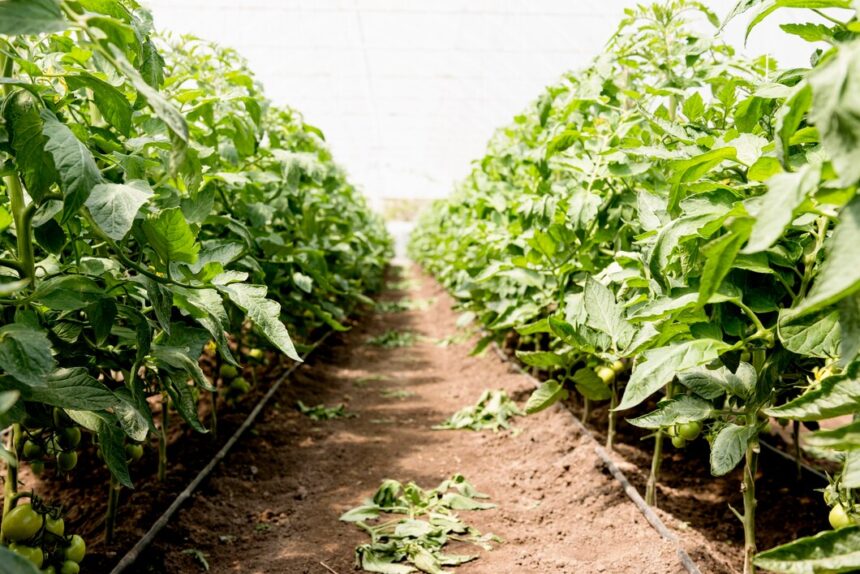Crop rotation is a fundamental practice in agriculture that involves growing different crops in a sequential order on the same piece of land over several seasons. In South Africa, where diverse climates and soil types are prevalent, effective crop rotation techniques are essential for maintaining soil fertility, controlling pests and diseases, and optimizing crop yields. Here are ten techniques South African farmers can follow for successful crop rotation:
1. Understand Crop Families
Group Crops by Families
Group crops according to their botanical families, as plants within the same family often have similar nutrient requirements and are susceptible to similar pests and diseases.
Rotate Across Families
Rotate crops across different botanical families to minimize the buildup of pests and diseases specific to certain crops.
2. Consider Nutrient Requirements
Nitrogen-Fixing Crops
Incorporate nitrogen-fixing legumes such as soybeans, peanuts, or beans into the rotation to replenish soil nitrogen levels and reduce the need for synthetic fertilizers.
Heavy Feeders vs. Light Feeders
Rotate heavy feeders like maize or potatoes with light feeders such as leafy greens or root crops to balance nutrient depletion in the soil.
3. Utilize Cover Crops
Winter Cover Crops
Plant cover crops during the off-season to protect soil from erosion, suppress weeds, and add organic matter. Common cover crops in South Africa include oats, rye, and clover.
Green Manure Crops
Grow green manure crops like alfalfa or vetch, which can be incorporated into the soil to improve soil structure and fertility.
4. Implement Cash Crop and Non-Cash Crop Rotation
Cash Crop Rotation
Alternate cash crops, such as maize or wheat, with non-cash crops like legumes or cover crops to diversify income streams and maintain soil health.
Intercropping
Intercrop cash crops with non-cash crops in the same field to maximize land use efficiency and enhance biodiversity.
5. Practice Multi-Year Rotations
Long-Term Planning
Plan multi-year rotations to ensure a balanced nutrient cycle and break pest and disease cycles effectively.
Crop Sequence
Rotate crops over several years, ensuring that each crop follows a different predecessor to prevent the buildup of soil-borne pathogens.
6. Manage Weed Pressure
Weed-Suppressive Crops
Incorporate crops with allelopathic properties, such as sorghum or sunflower, to suppress weed growth and reduce the need for herbicides.
Tillage Practices
Implement conservation tillage or minimum tillage techniques to disturb weed seeds minimally and preserve soil structure.
7. Address Soil pH and Fertility
Acid-Tolerant Crops
Include acid-tolerant crops like potatoes or legumes in rotations to mitigate soil acidification and maintain optimal pH levels.
Soil Testing
Regularly test soil pH and nutrient levels to adjust crop selection and fertilizer application accordingly.
8. Rotate Across Growth Habits
Root vs. Leaf vs. Fruit
Rotate crops with different growth habits, such as root crops (e.g., carrots), leafy greens (e.g., spinach), and fruiting crops (e.g., tomatoes), to minimize competition for nutrients and space.
Deep-Rooted vs. Shallow-Rooted
Alternate deep-rooted crops like maize with shallow-rooted crops like lettuce to access nutrients at different soil depths.
9. Implement Integrated Pest Management (IPM)
Natural Predators
Incorporate crops that attract beneficial insects or birds to control pest populations naturally.
Trap Crops
Use trap crops like mustard or radishes to lure pests away from main crops and reduce pest damage.
10. Monitor and Adapt
Regular Monitoring
Monitor crop health, soil moisture, and pest populations throughout the growing season to identify issues early and adjust management practices as needed.
Adaptive Management
Be flexible and adapt crop rotation plans based on weather patterns, market demands, and emerging pest or disease threats.
Effective crop rotation is essential for sustainable agriculture in South Africa, where diverse climates, soil types, and pest pressures present unique challenges to farmers. By implementing techniques such as grouping crops by families, considering nutrient requirements, utilizing cover crops, and practicing multi-year rotations, South African farmers can maintain soil fertility, control pests and diseases, and optimize crop yields. Integrating crop rotation with other sustainable practices such as conservation tillage, integrated pest management (IPM), and soil testing allows farmers to enhance productivity while preserving natural resources for future generations. By following these ten techniques, South African farmers can build resilient and productive agricultural systems that contribute to food security and environmental sustainability.
Join 'Farmers Mag' WhatsApp Channel
Get the latest Farming news and tips delivered straight to your WhatsApp
CLICK HERE TO JOIN






